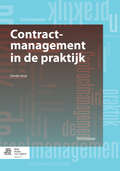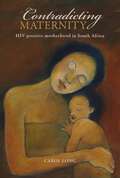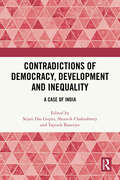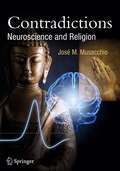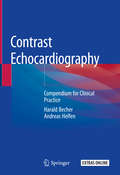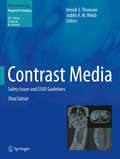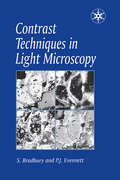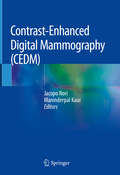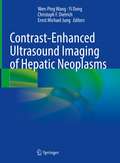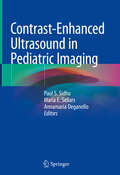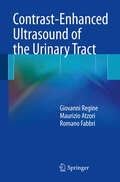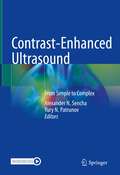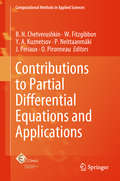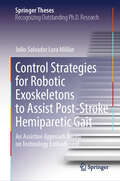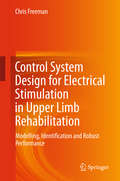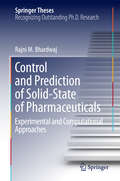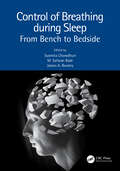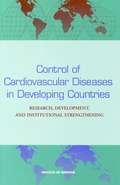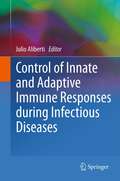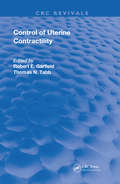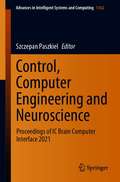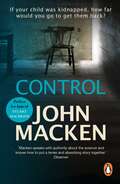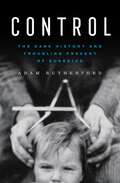- Table View
- List View
Contract Research and Development Organizations: Their Role in Global Product Development
by Shayne C. Gad Charles B. SpainhourThe last 10 years have seen a seismic shift in therapeutic product development and testing. In both the pharmaceutical (both small and large molecule) and medical device sectors, the vast majority of testing and evaluation of products is not performed within innovator companies, but rather has been outsourced to a growing universe of commercial organizations. The authors both have more than 30 years experience in this field, and both have worked within innovator companies, for CROs, and as consultants in the field. Contract Research and Development Organizations: Their Role in Global Product Development has been crafted by these authors to provide a how to guide for all aspects of working with CROs in selecting, working with and ensuring the best possible desirable outcome of having the R&D function, or substantial parts of it, outsourced. It uses as the exemplary case nonclinical safety assessment, biocompatibility and efficacy testing which are to be performed to select the best possible candidate compound, device or formulation and then moving the resulting regulated therapeutic medical product into and through the development process and to marketing approval. But also covered are the contract synthesis of drug substances and corresponding manufacture of biologics and manufacture of products, formulation development, clinical evaluation, regulatory and document preparation support, and use of consultants. Included in the volume are an exhaustive listing of those CROs in the (drug and device) safety evaluation sector and their contact information and capabilities, and extensive similar listing for the other types of contract service providers. Also included are guidances on how to monitor ongoing work at contract facilities and audit check lists for GLP, GMP and GCP facilities. These listings are international in scope, and a specific chapter addresses working with some of the newer international CROs.
Contractmanagement in de praktijk
by Ted Knoesteraan de hand van eigen ervaringen worden specifieke vaardigheden en kennis voor contractmanagement beschreven. Het is een herziening van deze titel (uit 2009)
Contradicting Maternity: HIV-positive motherhood in South Africa
by Carol LongDrawing on rich and poignant interviews with mothers who have been diagnosed HIV-positive, Contradicting Maternity provides a rare perspective of motherhood from the mother’s point of view. Whereas motherhood is often assumed to be a secondary identity compared to the central figure of the child, this book reverses the focus, arguing that maternal experience is important in its own right. The book explores the situation in which two very powerful identities, those of motherhood and of being HIVpositive, collide in the same moment. This collision takes place at the interface of complex, and often split, social and personal meanings concerning the sanctity of motherhood and the anxieties of HIV. The book offers an interpretation of how these personal and social meanings resonate with, and also fail to encompass, the experiences surrounding HIV positive mothers. Photographs, academic literature and the accounts of real women are read with both a psychodynamic and discursive eye, highlighting the contradictions within maternal experience, but also between maternal experience and the social imagination. Contradicting Maternity will appeal to scholars, students and practitioners in psychology, the social sciences and the health professions. The sensitive and readable analysis will also be of interest to mothers, whether HIV-positive or not.
Contradictions of Democracy, Development and Inequality: A Case of India
by Sejuti Das Gupta Shouvik Chakraborty Taposik BanerjeeIdentity politics has widened representation for the marginalised groups in democracies, while neoliberalism has deepened inequality. This volume finds answers to the paradox of widening representation and worsening inequality especially in India exploring the themes of development and identity in recent times. Inspired by Caesar Basu’s works as a political thinker, this volume weaves in economic concerns with the socio-cultural aspects of identity and contends that representation is not sufficient. Further, it highlights the importance of reinstating redistribution to serve both democracy and development. It looks at neoliberal policies and how they maximise negative liberty by focussing on the individual thereby obliterating the question of the social location of individuals. The contributors to this volume investigate these issues through the lens of religion, gender, caste, and raise interdisciplinary questions concerning ecological conditions of labour, the institution of democracy and capitalist regimes, linkages among multiple sectors of the Indian economy, devaluation of women’s work in the care economy, material distribution of resources, and liberty and civil rights. This book creates a much-needed conversation between the study of development through the economic perspective and the cultural or political sociology perspective.It will be of interest to students and researchers of politics especially identity politics, economics, sociology and social justice, development studies, and social geography.
Contradictions: Neuroscience and Religion (Springer Praxis Books)
by José M. Musacchio"Contradictions" is a general interest book that exposes the incompatibility between popular religious beliefs and the scientific view of human nature. It begins with a survey of the evolution of religions and their continuing, often irrational, influences in modern society. Then, based on his long experience in neuroscience, the author takes issue with Decartes about the duality of body and soul. He presents case studies of patients with brain diseases and from these deduces that the soul, far from being separate and supernatural, is no more or less than our way of experiencing our brains ... and which correspondingly disintegrates when they do. Convincing clinical findings and powerful arguments about the universality of truth make this book a bold contribution to the debate about belief and religion in the modern world.
Contrast Echocardiography: Compendium for Clinical Practice
by Andreas Helfen Harald BecherThis book provides a comprehensive overview of the practical aspects of contrast echocardiography. It also covers all the material in the guidelines published by the American Society of Echocardiography (ASE) in 2018 and the recommendations set out by the European Association of Cardiovascular Imaging (EACVI) in 2017. Contrast echocardiography at present is only used in 5-10% of cases, but this is expected to grow rapidly following the recommendations of the ASE and EACVI. The chapters cover the approved indications and provide practical advice on how to administer the contrast agents and how to optimize the recordings as well as how to deal with the pitfalls. The reader will find all the information on how to use contrast agents for assessment of shunts, LV volumes and function as well as myocardial diseases and masses. Detailed protocols are included for stress echocardiography and myocardial perfusion imaging. Other topics covered include the use of contrast agents for coronary sonography and transesophageal echocardiography. Contrast Echocardiography: Compendium for Clinical Practice comprehensively covers all aspects of the clinical use of contrast echocardiography and has been written by two cardiologists who share their experience from their high volume echo laboratories. One of the authors has been a member of both the ASE guidelines and EACVI recommendation writing groups. It is therefore, a critical text for echocardiographers and sonographers who perform echocardiography.
Contrast Media: Safety Issues and ESUR Guidelines (Medical Radiology)
by Henrik S. Thomsen Judith A. W. WebbThis is the third edition of a very successful book that originally emerged from the work of a committee set up by the European Society of Urogenital Radiology in 1994 to consider the safety of contrast media used for diagnostic imaging. The new edition not only fully updates the previous edition, but also includes new chapters on complex topics such as pediatric issues and practical aspects of off-label contrast media use. Comprehensive consideration is given to the many different safety issues relating to iodine-based contrast media, gadolinium-based contrast media, microbubbles for ultrasound, and barium sulfate. The text includes chapters on both acute and delayed non-renal adverse reactions and on renal adverse reactions. All of the questions frequently raised in radiological practice are addressed. This book, presented in a handy, easy-to-use format, provides an invaluable, unique, and unparalleled source of information.
Contrast Techniques in Light Microscopy
by S. Bradbury and P.J. EvennettContrast in an image is essential to distinguish features from one another and from the background. This practical handbook describes the ways in which light interacts with the specimen in the microscope.
Contrast-Enhanced Digital Mammography (CEDM)
by Jacopo Nori Maninderpal KaurThis book offers a comprehensive, practical resource entirely devoted to Contrast-Enhanced Digital Mammography (CEDM), a state-of-the-art technique that has emerged as a valuable addition to conventional imaging modalities in the detection of primary and recurrent breast cancer, and as an important preoperative staging tool for women with breast cancer. CEDM is a relatively new breast imaging technique based on dual energy acquisition, combining mammography with iodine-based contrast agents to display contrast uptake in breast lesions. It improves the sensitivity and specificity of breast cancer detection by providing higher foci to breast-gland contrast and better lesion delineation than digital mammography. Preliminary results suggest that CEDM is comparable to breast MRI for evaluating the extent and size of lesions and detecting multifocal lesions, and thus has the potential to become a readily available, fast and cost-effective examination. With a focus on the basic imaging principles of CEDM, this book takes a practical approach to breast imaging. Drawing on the editors’ and authors’ practical experience, it guides the reader through the basics of CEDM, making it especially accessible for beginners. By presenting the key aspects of CEDM in a straightforward manner and supported by clear images, the book represents a valuable guide for all practicing radiologists, in particular those who perform breast imaging and have recently incorporated or plan to incorporate CEDM into their diagnostic arsenal.
Contrast-Enhanced Ultrasound Imaging of Hepatic Neoplasms
by Wen-Ping Wang Yi Dong Christoph F. Dietrich Ernst Michael JungThis book aims to provide reader an overview of clinical applications of contrast-enhanced ultrasound in hepatic neoplasms diagnosis. Ultrasound images and pathological results of different hepatic neoplasms are introduced in the chapters, including benign liver tumors, malignant liver tumors, hepatic carcinoma, intrahepatic cholangiocarcinoma, rare liver benign and malignant neoplasms, regenerative nodules, inflammatory pseudotumor, parasite liver lesions, and hepatitis peliosis, etc. The combination of ultrasound findings with final histopathological results then discover the potential mechanical of contrast enhancement changes. With the development of ultrasound technology and widely application of ultrasound contrast agents (USCA) in recent decades, contrast-specific imaging modalities have been developed in combination with USCA and a low mechanical index (MI), allowing continuous real-time grey scale imaging. The updated contrast-specific software for liver diseases and hepatic tumors diagnosis has also been described described in detail. With high-resolution contrast ultrasound images during arterial phase, portal venous phase and late phase, author wants to show the whole dynamic wash-in and wash-out process of the different focal liver lesions.This book is an invaluable resource for radiologists, hepatologists and oncologists in their everyday clinical practice.
Contrast-Enhanced Ultrasound in Pediatric Imaging
by Paul S. Sidhu Maria E. Sellars Annamaria DeganelloThis book is a comprehensive guide to the rapidly evolving field of contrast-enhanced ultrasound (CEUS) in the child. The uses and interpretation of CEUS are clearly explained with the aid of numerous illustrations. The coverage encompasses both established indications, such as focal liver lesions, abdominal solid organ injury, and vesicoureteral reflux, and a range of newer applications. Extensive information is also provided on microbubble agents and their use in the pediatric age group, as well as on practical aspects of setting up a CEUS service for children.CEUS is a safe imaging method that is ideal for the young patient and can be used for problem solving in a number of clinical situations. Ultrasound combined with microbubble contrast avoids the ionizing radiation of a CT examination, the use of iodinated contrast, the need for sedation or a general anesthetic, and the complexities of MR imaging. In bringing readers up to date with best practice and the latest innovations in CEUS, this book will be of value for pediatric radiologists, pediatric sonographers/technicians, and pediatricians.
Contrast-Enhanced Ultrasound of the Urinary Tract
by Maurizio Atzori Giovanni Regine Romano FabbriThis book examines in detail the diagnostic impact of contrast-enhanced ultrasound in the evaluation of urinary tract pathology, paying particular attention to the diagnostic gain that may be expected in relation to other imaging techniques such as CT and MRI. The role of contrast-enhanced ultrasound is evaluated in a range of pathologies, including ischemia, trauma, inflammation, cystic lesions, and solid tumors, as well as in the imaging of anatomic variants. New applications, for example monitoring of kidney transplantation, assessment of urinary bladder lesions, and diagnosis of vesico-ureteric reflux, are also covered. The presented cases, drawn from the authors' personal clinical caseload, include images obtained using multimodality techniques, sometimes with 3D CT reconstruction. The authors' own experiences are compared with the most recent reports in the scientific literature.
Contrast-Enhanced Ultrasound: From Simple to Complex
by Alexander N. Sencha Yury N. PatrunovThis book provides a comprehensive analysis of the value of contrast-enhanced ultrasound (CEUS) in the diagnosis of a wide variety of pathologies. Sonography reliably identifies a wide range of diseases, and the efficacy of modern ultrasound has dramatically improved with contrast enhancement. This book covers almost all aspects of CEUS starting from basic principles and ending with features of its application in individual organs. In particular, it explores the diseases of abdominal, retroperitoneal, and pelvic organs as well as superficial structures, highlighting the characteristic features of typical findings. Focal lesions are discussed in depth, with attention to their early detection and differential diagnosis. Besides, a practical approach to the stratification of the risk of malignancies is provided. The authors summarized their own experience with CEUS in oncology, hepatology, gynecology, urology, endocrinology, and other fields of medicine. The role of CEUS in differential diagnosis of various disorders of the female reproductive system is comprehensively discussed as well. The presentation is clear and concise, and richly illustrated. The book will be a helpful tool for both residents and practitioners approaching ultrasound diagnostics, as well for more experienced radiologists and other professionals.
Contributions to Partial Differential Equations and Applications (Computational Methods in Applied Sciences #47)
by B. N. Chetverushkin W. Fitzgibbon Y. A. Kuznetsov P. Neittaanmäki J. Periaux O. PironneauThis book treats Modelling of CFD problems, Numerical tools for PDE, and Scientific Computing and Systems of ODE for Epidemiology, topics that are closely related to the scientific activities and interests of Prof. William Fitzgibbon, Prof. Yuri Kuznetsov, and Prof. O. Pironneau, whose outstanding achievements are recognised in this volume. It contains 20 contributions from leading scientists in applied mathematics dealing with partial differential equations and their applications to engineering, ab-initio chemistry and life sciences. It includes the mathematical and numerical contributions to PDE for applications presented at the ECCOMAS thematic conference "Contributions to PDE for Applications" held at Laboratoire Jacques Louis Lions in Paris, France, August 31- September 1, 2015, and at the Department of Mathematics, University of Houston, Texas, USA, February 26-27, 2016. This event brought together specialists from universities and research institutions who are developing or applying numerical PDE or ODE methods with an emphasis on industrial and societal applications. This volume is of interest to researchers and practitioners as well as advanced students or engineers in applied and computational mathematics. All contributions are written at an advanced scientific level with no effort made by the editors to make this volume self-contained. It is assumed that the reader is a specialist already who knows the basis of this field of research and has the capability of understanding and appreciating the latest developments in this field.
Control Strategies for Robotic Exoskeletons to Assist Post-Stroke Hemiparetic Gait: An Assistive Approach Based on Technology Embodiment (Springer Theses)
by Julio Salvador Lora MillánThis book presents a new framework to improve the integration of exoskeletons in hemiparetic patients. The idea is to reduce potentially damaging compensatory strategies in the non-paretic leg, by ensuring a proper technology embodiment of the robotic exoskeletons in the nervous system. Upon reviewing control strategies for partial robotic exoskeletons applied to human gait, the book introduces robotic exoskeletons control algorithms, which were developed with the intention to promote gait symmetry by assisting the affected limb of hemiparetic patients according to the movement of the non-paretic leg. This new paradigm aimed at promoting the device's embodiment was expected to counteract the compensation mechanisms, which would become unnecessary and thus disappear. The control strategy relies on the gait phase estimation of the sound leg calculated using an adaptive frequency oscillator and was evaluated on post-stroke patients affected by hemiparetic gait, and the results are described in this book. All in all, this book offers a timely snapshot on control strategies for post-stroke robotic gait assistance. It also presents new findings concerning the role of robotic controllers in the embodiment of such devices, and their implications for new assistance paradigms for people with neurological gait disorders.
Control System Design for Electrical Stimulation in Upper Limb Rehabilitation: Modelling, Identification and Robust Performance
by Chris FreemanThis book presents a comprehensive framework for model-based electrical stimulation (ES) controller design, covering the whole process needed to develop a system for helping people with physical impairments perform functional upper limb tasks such as eating, grasping and manipulating objects. The book first demonstrates procedures for modelling and identifying biomechanical models of the response of ES, covering a wide variety of aspects including mechanical support structures, kinematics, electrode placement, tasks, and sensor locations. It then goes on to demonstrate how complex functional activities of daily living can be captured in the form of optimisation problems, and extends ES control design to address this case. It then lays out a design methodology, stability conditions, and robust performance criteria that enable control schemes to be developed systematically and transparently, ensuring that they can operate effectively in the presence of realistic modelling uncertainty, physiological variation and measurement noise.
Control and Prediction of Solid-State of Pharmaceuticals: Experimental and Computational Approaches (Springer Theses)
by Rajni M. BhardwajThis thesis investigates a range of experimental and computational approaches for the discovery of solid forms. Furthermore, we gain, as readers, a better understanding of the key factors underpinning solid-structure and diversity. A major part of this thesis highlights experimental work carried out on two structurally very similar compounds. Another important section involves looking at the influence of small changes in structure and substituents on solid-structure and diversity using computational tools including crystal structure prediction, PIXEL calculations, Xpac, Mercury and statistical modeling tools. In addition, the author presents a fast validated method for solid-state form screening using Raman microscopy on multi-well plates to explore the experimental crystallization space. This thesis illustrates an inexpensive, practical and accurate way to predict the crystallizability of organic compounds based on molecular structure alone, and additionally highlights the molecular factors that inhibit or promote crystallization.
Control of Breathing during Sleep: From Bench to Bedside
by Susmita Chowdhuri M Safwan Badr James A RowleyThis book describes control of ventilation during sleep in both health and disease states. The topics are presented in a fashion that can be easily comprehended with many figures to illustrate complex concepts. Thus, a wide range of topics, starting from the site of normal respiratory rhythm generation to chemoreceptor control of sleep apnea, description of the apneic threshold, pathophysiology of upper airway closure, novel techniques to measure control of breathing, effect of cerebral blood flow on breathing, effect of opioids on ventilation, effect of heart failure on ventilation, genetic aspects of breathing disorders, age and gender differences, and various therapies are discussed. Key Features • Helps to bridge the gap between straight forward physiology and clinical practice through a range of topics and use of case vignettes• Explores various aspects of clinical management and control which is beneficial to sleep clinicians, respiratory physiologists, intensivists, trainees, and researchers.• Distills complex concepts into understandable language and figures, providing helping resource to the clinicians, that transforms a dry topic vis a viz control of ventilation into an exciting understandable ‘clinician’ language.
Control of Cardiovascular Diseases in Developing Countries: Research, Development, and Institutional Strengthening
by Development Committee on Research Institutional Strengthening for Control of Cardiovascular Diseases in Developing CountriesCardiovascular diseases (CVD) are increasing in epidemic proportions in developing countries. CVD already accounts for almost 10 percent of the developing world's burden of disease and is likely to become the developing world's leading cause of death. There is reason for hope, however, given that huge potential exists for applying R&D to control this emerging epidemic--both in creating powerful new interventions such as vaccines and dietary supplements and in guiding behavior. In addition, a considerable body of evidence suggests that current risk-factor prevention programs and low-cost case management of CVD offer feasible, cost-effective ways to reduce CVD mortality and disability in developing country populations. Large-scale CVD control efforts are lacking, however, and thus governments and individuals are left to make choices about health and health care services without the benefit of appropriate knowledge. This report was designed to promote a policy dialogue on CVD based on informed knowledge of R&D opportunities that offer effective, affordable, and widely applicable responses in developing countries. The report examines (a) the emerging burden of CVD in developing countries, (b) the future worldwide burden of CVD, (c) current prevention and treatment of CVD in developing countries, (d) R&D to support CVD control, (e) opportunities and priorities for R&D, and the need for institutional arrangements for collaboration in facing the epidemic.
Control of Innate and Adaptive Immune Responses during Infectious Diseases
by Julio AlibertiUpon infection the host needs to mount vigorous immune response against pathogen in order to successfully control its replication. However, once the infectious agent is controlled or eliminated, host cells need to signal the immune system to slow or cease its activities. While vast knowledge has been accumulated through the years on the mechanisms involved in the initiation and effector phases of the immune responses, the pathways triggered in order to modulate or end innate and acquired immunity are becoming more evident as evidence for its relevance comes to surface. Due to its biological power, evidence has surfaced indicating that eventually pathogens may take advantage of such regulatory pathways in order to escape effector mechanisms and progress to persistence. This book will discuss several cellular pathways involved in controlling immune response in the context of infectious diseases, their biological consequences and potential "hijack" of these pathways for the benefit of pathogen leading towards pathogen persistence as opposed to clearance.
Control of Particulate Matter Contamination in Healthcare Manufacturing
by Thomas A. BarberWritten by an expert in the industry, this text addresses the specifics of contamination, including particle origination, characterization, identification, and elimination, with a special focus on quality. The author offers a clear and concise review of particle populations and their control in stability, efficacy, and predictability in the manufacture of healthcare products. He brings together information from over 100 Web sites and other sources and casts it into a practical framework that will help readers ensure their company's success. The book contains thirty-two color photomicrographs and over eighty figures, tables, and charts.
Control of Uterine Contractility: Mechanisms Of Control (Routledge Revivals)
by Robert E. Garfield Thomas N. TabbPublished in 1994: The Editors have outlines many advances in the field of uterine physiology in hopes of furthering the science.
Control, Computer Engineering and Neuroscience: Proceedings of IC Brain Computer Interface 2021 (Advances in Intelligent Systems and Computing #1362)
by Szczepan PaszkielThis book presents the proceedings of the 4th International Scientific Conference IC BCI 2021 Opole, Poland. The event was held at Opole University of Technology in Poland on 21 September 2021. Since 2014, the conference has taken place every two years at the University’s Faculty of Electrical Engineering, Automatic Control and Informatics. The conference focused on the issues relating to new trends in modern brain–computer interfaces (BCI) and control engineering, including neurobiology–neurosurgery, cognitive science–bioethics, biophysics–biochemistry, modeling–neuroinformatics, BCI technology, biomedical engineering, control and robotics, computer engineering and neurorehabilitation–biofeedback.
Control: (Reuben Maitland: book 4): a heart-stopping and engrossing nightmarish thriller that you won’t be able to stop reading
by John MackenFans of Kathy Reichs, Karin Slaughter and Patricia Cornwell will love this hard-hitting and riveting forensic thriller by bestselling author John Macken."Cutting -edge forensics, an all-too-human hero and a nightmarish scenario: Control is one you won't put down" - Simon Beckett"Tense and absorbing" - OBSERVER"This kept me engrossed from start to finish" -- ***** Reader review"Has everything a good crime thriller should have: killings, suspense, terror..." -- ***** Reader review********************************************************IF YOUR CHILD WAS KIDNAPPED, HOW FAR WOULD YOU GO TO GET THEM BACK?Two murders, days apart but clearly linked. Each victim has had the tips of their fingers removed with a hacksaw. The killer is sending a message and wants his next victim to know who they are - and be very afraid. But beside the gruesome nature of their deaths there is no obvious connection between the two victims.Reuben Maitland, freshly returned to GeneCrime, must investigate the case. The forensics come in, DNA is sampled, the clues begin to mount up.Then the killer strikes again. Reuben's young son, Joshua, is snatched from his pram. The murderer sends Reuben a message: 'Stop hunting me. I will kill again, a third and final victim and you must not stop me. Come after me and your son will die.
Control: The Dark History And Troubling Present Of Eugenics
by Adam RutherfordHow did an obscure academic idea pave the way to the Holocaust within just fifty years? Control is a book about eugenics, what geneticist Adam Rutherford calls “a defining idea of the twentieth century.” Inspired by Darwin’s ideas about evolution, eugenics arose in Victorian England as a theory for improving the British population, and quickly spread to America, where it was embraced by presidents, funded by Gilded Age monopolists, and enshrined into racist American laws that became the ideological cornerstone of the Third Reich. Despite this horrific legacy, eugenics looms large today as the advances in genetics in the last thirty years—from the sequencing of the human genome to modern gene editing techniques—have brought the idea of population purification back into the mainstream. Eugenics has “a short history, but a long past,” Rutherford writes. The first half of Control is the history of an idea, from its roots in key philosophical texts of the classical world all the way into their genocidal enactment in the twentieth century. The second part of the book explores how eugenics operates today, as part of our language and culture, as part of current political and racial discussions, and as an eternal temptation to powerful people who wish to improve society through reproductive control. With disarming wit and scientific precision, Rutherford explains why eugenics still figures prominently in the twenty-first century, despite its genocidal past. And he confronts insidious recurring questions—did eugenics work in Nazi Germany? And could it work today?—revealing the intellectual bankruptcy of the idea, and the scientific impossibility of its realization.

